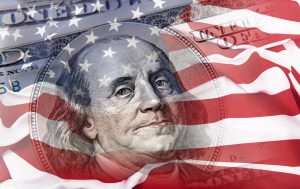Officials from the United States and China held trade negotiations in London, concluding with an agreement on a “framework” to revive the flow of sensitive goods, including rare earths.[1, 2] While this indicated a procedural step forward, the absence of detailed commitments led to a cautious market response, with global markets offering a “restrained welcome” rather than a significant rally.[3, 4]
Impact on Currencies:
* The Australian Dollar (AUD) saw a notable benefit, climbing towards its monthly high. As China’s largest trading partner, Australia’s currency found support from the perceived easing of trade tensions, which improved the economic outlook for the Asia/Pacific region.[5, 6]
* The Japanese Yen (JPY), typically considered a safe-haven asset, struggled to attract buyers as the trade optimism reduced demand for such assets.[7, 8]
* The US Dollar (DXY) exhibited a mixed performance. While it generally held up well, it did not build significant momentum following the trade announcement, remaining susceptible to underlying domestic fiscal concerns and the potential for negative trade-related headlines.[1, 9] The increase in tariffs on steel and aluminum to 50% is also expected to drive US inflation higher, complicating the Federal Reserve’s policy decisions.[10, 4]
Central Bank Divergence: Policy Paths Diverge
A significant theme this week was the growing divergence in monetary policy approaches among major central banks:
* European Central Bank (ECB): The ECB Governing Council decided to lower its three key interest rates by 25 basis points, effective June 11th. The deposit facility rate was reduced to 2.00%. This decision was based on an updated assessment of the inflation outlook, which projects headline inflation to average 2.0% in 2025, a downward revision primarily due to lower energy prices and a stronger euro.[11, 12]
* US Federal Reserve (Fed): In contrast, the Fed maintained its federal funds rate within the 4.2%-4.5% target range, as indicated by minutes from its May meeting released on May 29th. The Fed’s stance is complicated by rising inflation expectations, particularly those influenced by tariffs, which are seen as compelling the Fed to remain “stuck on the sidelines” to tame “tariff-induced inflation” before considering further rate cuts.
* Bank of Japan (BoJ): The BoJ continues to face a challenging balance between persistent inflation pressures (core consumer prices surged 3.5% year-on-year in April) and slowing economic growth (Japan’s Q1 GDP contracted by 0.2% quarter-on-quarter). The market currently prices only a 51% probability of rate changes through 2025, with the BoJ widely expected to keep rates unchanged at its June meeting.[9, 13, 14, 15]
* Bank of England (BoE): The BoE’s Monetary Policy Committee (MPC) showed “clear divisions” at its May meeting regarding rate cuts. Inflation unexpectedly jumped to 3.5% in April, but payroll employment saw a significant decline in May, signaling potential economic weakness. Markets are pricing a 90% probability of unchanged rates at the June meeting.
* Reserve Bank of Australia (RBA): The RBA reduced its official cash rate by 25 basis points to 3.85% in its May 2025 meeting, influenced by easing inflationary pressures and weaker-than-expected household consumption. ASX futures indicate an 89% expectation of a further 25 basis point decrease at the next RBA Board meeting on July 8th.
This divergence in monetary policy paths is a primary driver of G10 FX movements, as central banks respond to their unique inflation and growth dynamics.
Performance Snapshot: Key FX Pairs (June 8-11, 2025)
* DXY (US Dollar Index): The DXY showed mixed signals. While it registered a modest rise of 0.2% on June 11th [16, 13], its overall performance for the week was not uniformly strong, reflecting underlying vulnerabilities such as domestic fiscal concerns and the impact of tariffs on inflation.
* EUR/USD: The Euro displayed resilience against the US Dollar, trading around 1.1421 as of June 11th.[17, 15] Despite the ECB’s rate cut becoming effective on June 11th, the Euro maintained its ground, suggesting the market interpreted the cut as a calibrated move rather than the start of an aggressive easing cycle.[7, 11, 9, 18]
* USD/JPY: The pair advanced for the first time in the week on June 10th, trading near 145.20 and posting gains of over 0.24%. This was primarily driven by the US Dollar climbing on speculation of a US-China trade agreement, which undermined the safe-haven Japanese Yen.[3, 7, 11, 8, 19]
* GBP/USD: Sterling remained under pressure, extending its decline below 1.3500 to approximately 1.3475 on June 11th.[20, 13] This weakness was attributed to disappointing UK economic data, including slowing retail sales growth and a significant decline in payroll employment, which created a challenging scenario for the Bank of England.
* AUD/USD: The Australian Dollar was a clear beneficiary of trade optimism, climbing towards its monthly high of 0.6486 on June 9th. The narrowing threat of a US-China trade war improved the outlook for the Asia/Pacific region, providing a strong tailwind for the AUD despite the RBA’s easing bias.[5, 7, 6, 21, 8]
Outlook: What’s Next for the FX Market?
The coming weeks are expected to see continued interplay between global trade dynamics and the increasingly divergent paths of central bank monetary policies. Market participants will closely monitor any further developments in trade negotiations and their tangible impact on inflation and global supply chains. Upcoming economic data, particularly inflation and employment figures, will be critical in shaping market expectations for central bank actions. The confluence of geopolitical uncertainty, divergent monetary policies, and mixed economic data suggests that FX markets will remain highly dynamic.



